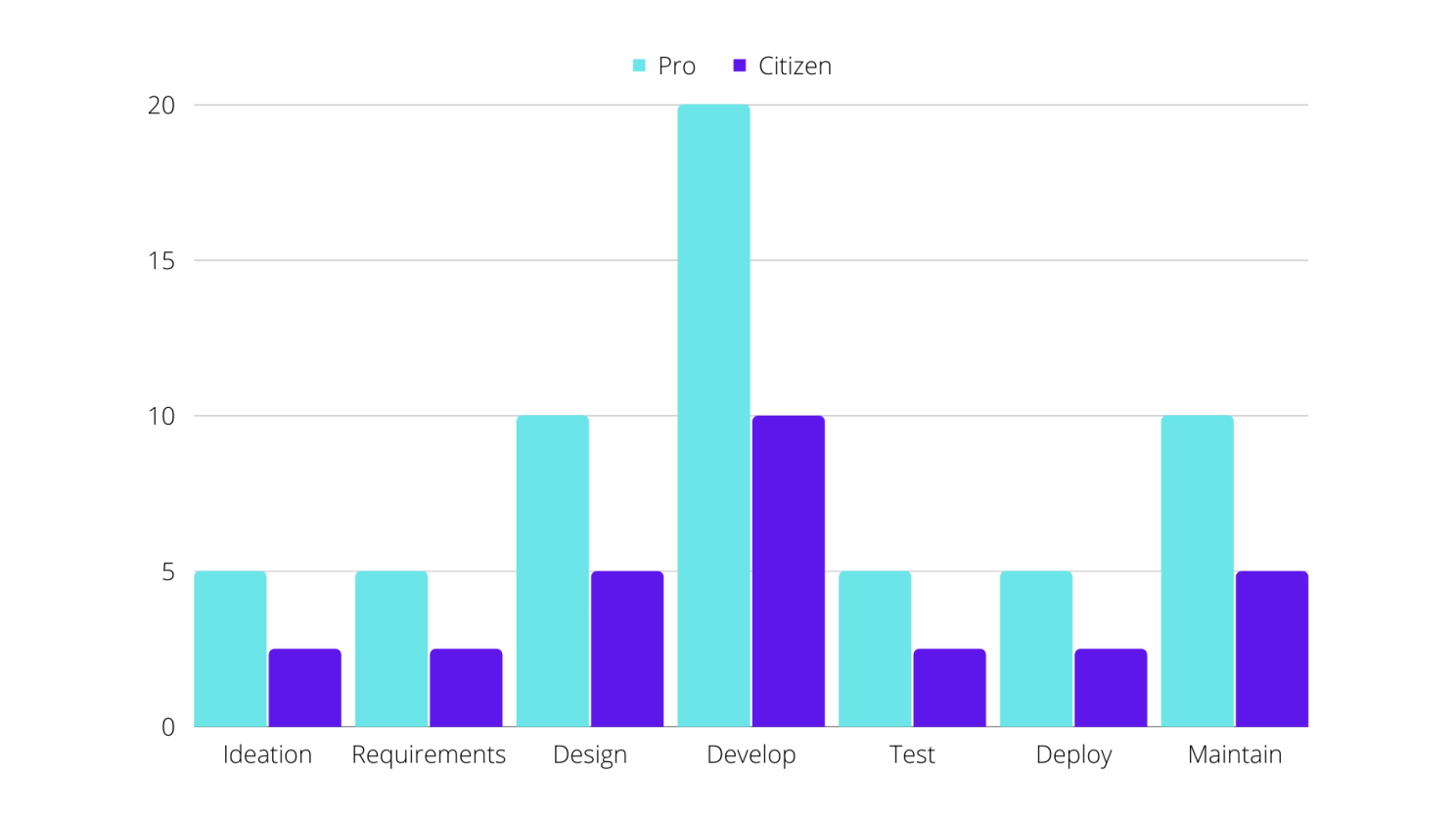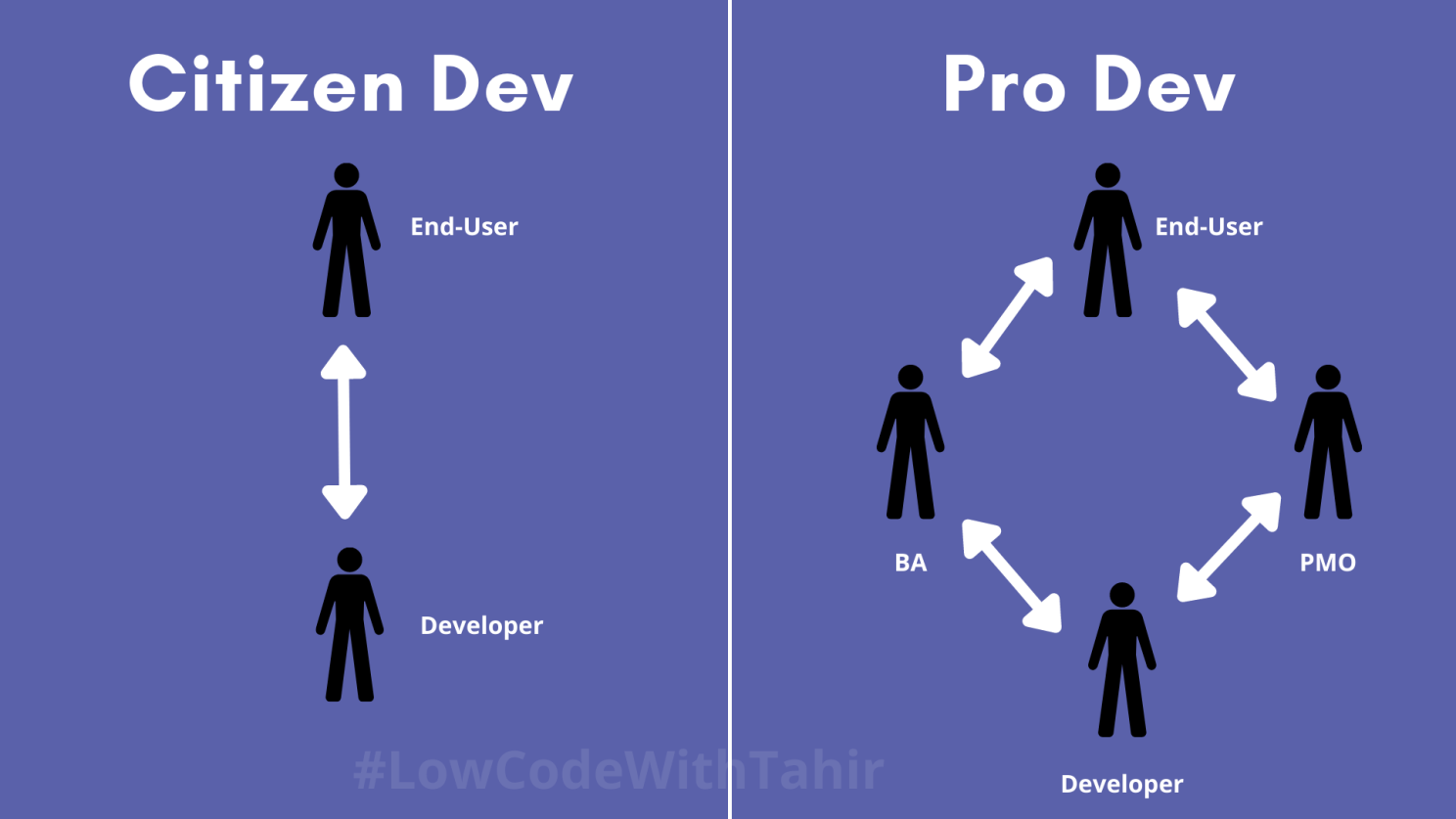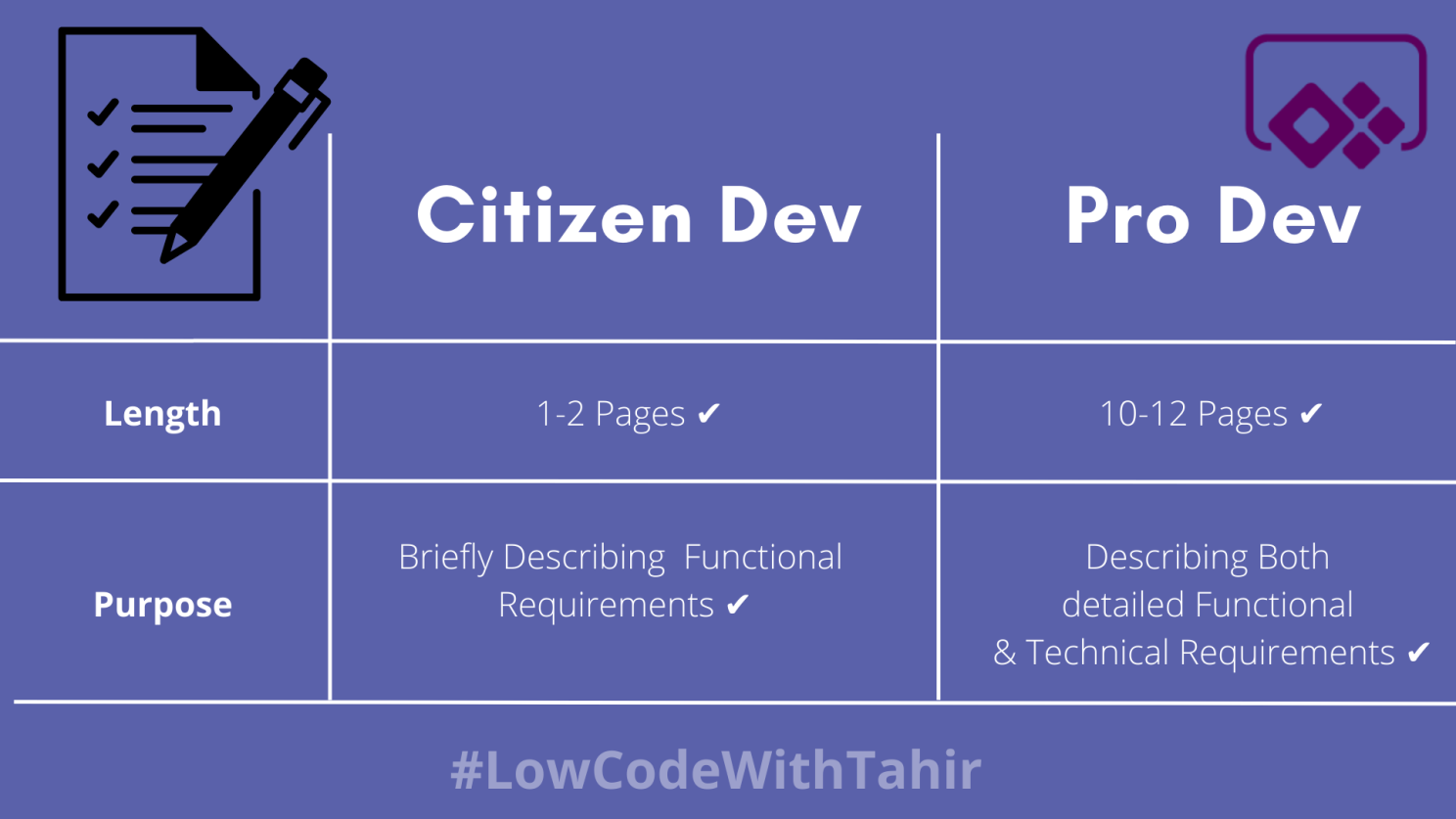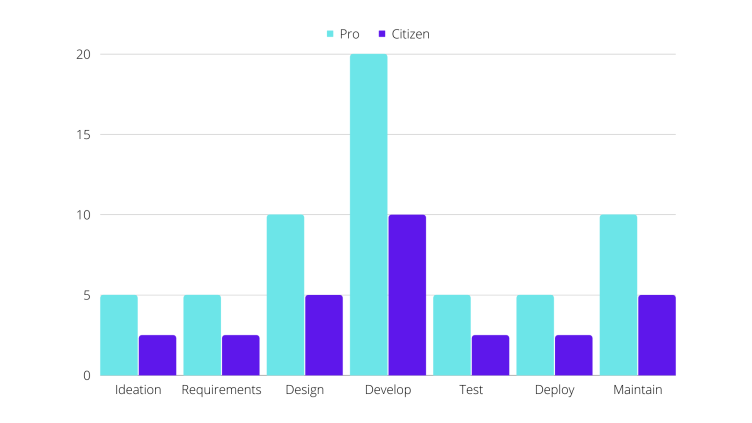
Every software development lifecycle has got a few common stages of development.
On average, the PowerApps Citizen Development lifecycle reduces the effort invested in each of these stages by roughly 50%. And in a few cases, here the application development cycle may end up being up to 4x or 5x times faster than a traditional software development lifecycle.
That’s how you complete your application at a fraction of your precious time & budget. Imagine completing applications in just 10-20% time & budget. Yes, even that happens in many cases!
Below is a graph depicting effort reduction for each of these stages via Citizen Development with a low-coding tool. (Citizen vs Professional Development)
If you would like to receive updates more often around Low-Code & Citizen Development, follow me on my LinkedIn profile Mohd Tahir Khan
The remaining section of this blog will explore 3 key differences of a PowerApps Citizen Development Lifecycle which make it so quick.
1. Magic of using a Low-Coding Tool like PowerApps 📱
My connection Dan Scarfe has given a lovely Analogy of Huf Haus to explain the Low-Coding tool PowerApps & how it’s different from custom development.
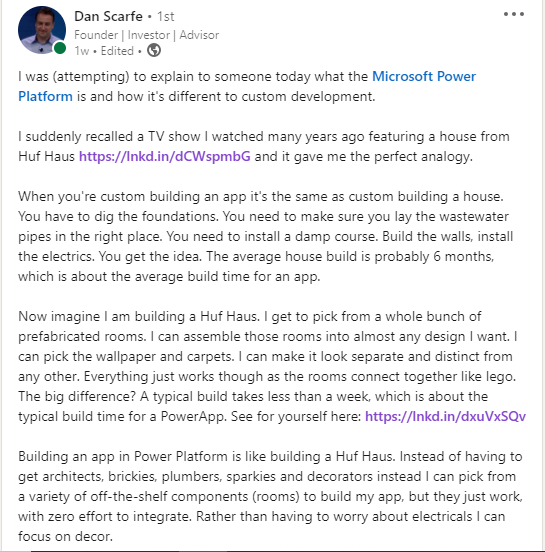
2. Communication 📞
Usually, the more complex a project is, the more stakeholders get involved in it. More stakeholders mean more meetings, chats & calls. And that adds up along with the actual application development time.
But a citizen developer is mostly developing MVP Apps/Automations that initially don’t involve many complexities. Being very close to the end-users, these Devs have got most requirements upfront.
Many times, the Citizen Developer ends up being the end-user. These are the cases where a Citizen Dev is building Apps to enhance personal productivity. So the Stakeholder interactions are further minimized resulting in speedy IT deliveries.
3. Documentation:
A traditional software development lifecycle with lots of coding involved would apply top industrial practices to produce high-quality software. Which includes things like in-depth technical design documents, test & release automation at scale, refactoring code, etc.
But PowerApps Citizen Developers are mostly developing MVPs without investing too much in engineering. Learning the complex technical jargon is not needed at this stage. Usually, a 1-2 page TDD document should be sufficient & it should add up small effort to the entire lifecycle, to keep it short.
These differentiations result in a short turnaround time for a Citizen Developer’s PowerApp lifecycle with rapid IT deliveries. No doubt, this route is more suitable for MVP Apps/Automations involving low complexities. At some point, as the project complexity increases, the control should move to the Professional IT Development teams.
I hope you found this article helpful. If you had like to be notified about all my future articles follow my Weekly Newsletter PowerApps Citizen LowCode Tipson Linkedin now.
